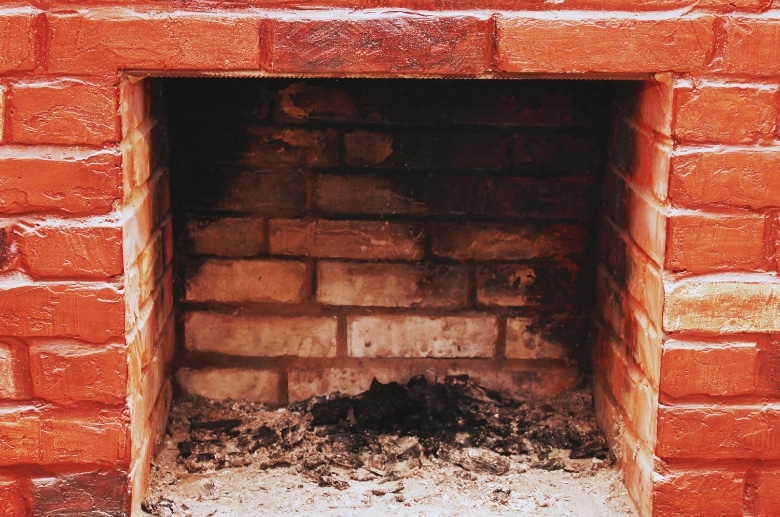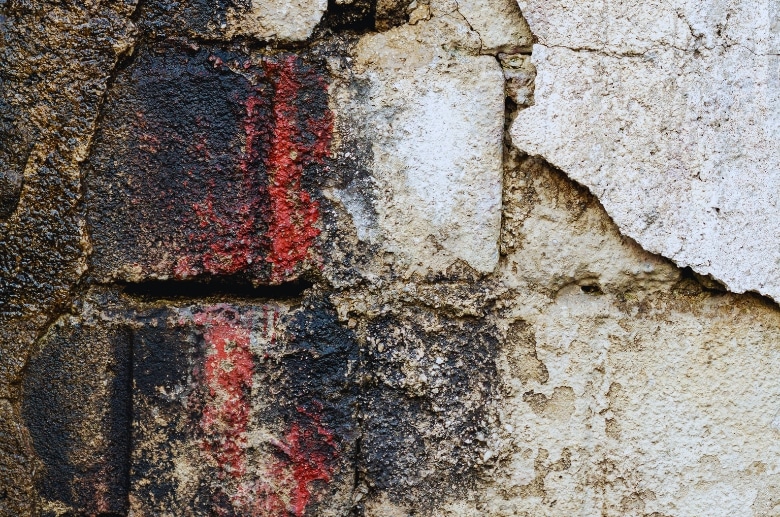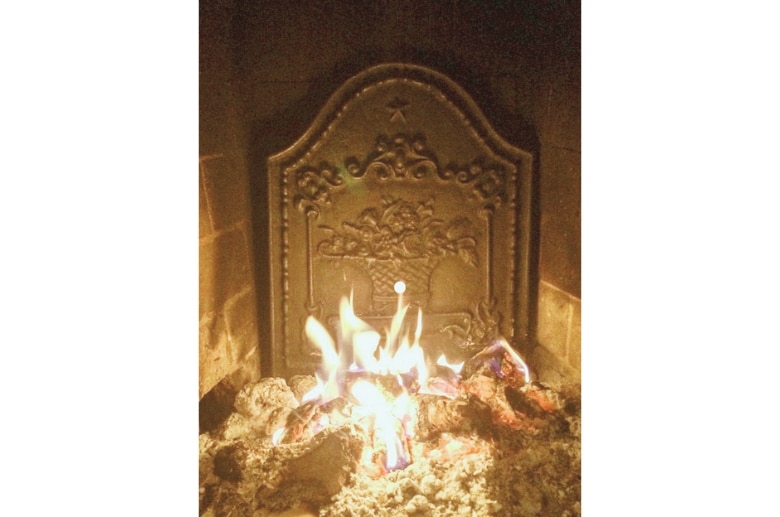The fireplace, often the heart of a home, is cherished for its ability to add warmth and a cozy ambiance, especially during those chilly months. Yet, if you find yourself bundled up and questioning, “Why doesn’t my fireplace heat the room?” you’re facing a common but fixable issue.
A range of factors can impact your fireplace’s heating efficiency. Everything from inadequate ventilation and the use of poor quality wood to a lack of proper maintenance could be affecting its performance.
Let’s examine these challenges and find ways to transform your fireplace into the effective heater it’s meant to be. This will ensure that it lives up to its role as the centerpiece of your room, not just in looks but also in warmth.

Why Doesn’t My Fireplace Heat The Room
There are many reasons why a fireplace isn’t heating your home properly. Here are just some of them.
1. Lack of Maintenance

Maintaining the fireplace is an important factor in its ability to heat your home effectively. If it hasn’t been inspected in a while, you can expect that it won’t function properly. You need to have it inspected at least once a year.
A professional can clean your chimney as well as inspect other areas that could affect the fireplace’s performance. In addition, you should also clean your fireplace, ideally after each use, making sure there is minimal dirt and creosote buildup. These particles affect airflow, which in turn affects a fire’s heat output.
——
Do You Need to Hire Chimney & Fireplace Expert?
Get free quotes from qualified experts near you. No commitment required!
——
2. Low Heat
Low heat from a fireplace that fails to effectively warm the room can stem from various issues, each significantly affecting the unit’s heating efficiency. A primary factor is the quality of fuel used, unseasoned or wet wood leads to a lower heat output compared to seasoned wood.
Wood that has been properly dried for a period of six months to a year burns much hotter and more efficiently. It’s crucial, then, to have a good grasp of fireplace temperature ranges. This knowledge not only helps you pick the right wood but also sets realistic expectations for your fireplace’s heat output.
3. Inadequate Ventilation
For combustion to occur, you need a steady flow of oxygen. A fireplace that heats a room properly should have hot air and toxic byproducts exiting up through the chimney. While this occurs, the airspace that opens from this venting is filled with cold air, which then feeds the fire.
This process of drafting can be interrupted. There could be something physically blocking the chimney, which would prevent an efficient drafting process. Another is negative air pressure, where the opposite can happen; instead of being sucked up to the chimney, hot gases and byproducts are sucked back into the room.
There’s also the size of your firebox to consider. The firebox and chimney need to be in the right ratio for proper venting to happen. For every 10 square inches of firebox, there should be at least a square inch of chimney flue. This allows all that soot and gas to exit the chimney properly and not go back into your home.
4. Damaged or Faulty Components
There could be a damaged or faulty part of your fireplace that is causing it to not heat your house as well as it used to. Because the fireplace is constantly exposed to extreme temperatures, it’s unavoidable that it will experience some damage over time.
Check for rust in your fireplace’s metal pieces. Repairs should be a priority. These signs of damage will eventually lead to corrosion, which can cause more problems if left untreated.
5. Fire Brick Cracks

Fire brick cracks result from prolonged exposure to water leaking into the chimney from rain or snow. This can erode your fireplace’s brick or stone masonry, weakening the structure and possibly leaking hazardous gas into your home.
If the bricks in your fireplace are beginning to crack or crumble, it’s time to replace the broken bricks. It will help preserve the structure of your fireplace so you can continue using it for many more years.
A solution to keeping water from entering your chimney is by using a chimney cap. It’s specially designed to protect the chimney from water intrusion while still allowing smoke to escape.
How To Get More Heat From Your Fireplace
We’ll take a look at some tips to help you get more heat from your fireplace.
Use Fireplace Accessories

A lot of heat can escape to the walls of your fireplace. To fix this, you can install a fireback, which is a heavy metal structure (stainless steel or cast iron) that reflects heat from the fireplace into the living area. It can prevent heat from escaping and protect the brick from extreme heat.
A fireplace door is a tempered glass door designed to make your fireplace burn more efficiently. These glass doors are cheap, effective, and come in a variety of style options. Opt for one that is made of ceramic glass, as this type is more efficient at transmitting heat from the fireplace. It’s also more durable compared to regular glass.
Check the Gas Fireplace Fuel and Settings
Before starting a fire, check your fireplace settings and adjust it for optimal heat. Your fireplace should have a safety instruction manual that shows all the features of the control system.
Most gas fireplaces come with a safety feature called a pilot light, which automatically turns off if the fireplace has not been used for some time. Check to make sure that this feature is operational in your fireplace.
As discussed earlier, high-quality fuel is also essential for efficient burning. Pick only dry wood that’s been seasoned properly for at least 3 months.
When burning wood, you’ll want to stack it so that airflow can occur between the individual logs. The common stacking shapes are the Lean-To Fire and Hunter’s Fire. These two shapes allow for airflow between the logs.
Turn Up the Heat with a Damper
A damper is a door attached above the firebox at the throat of the chimney. It is what controls airflow in and out of the chimney. Before starting a fire, make sure the damper is fully open. Once you have a good fire going, close it slightly to prevent excess heat from escaping.
If the room is not heated enough, close the damper a bit more. It will improve the warmth in your home. Just make sure you do not completely close the damper when a fire is still burning. You need just enough ventilation for toxins and gases to escape.
If you’re not burning wood, close the damper, as this can help cut down on the loss of warm air in the room.
Assess Your Room Insulation and Layout
Poor insulation in your home could be the reason you’re losing heat. Poor wall insulation accounts for 35% to 40% of heat loss in homes. If you’ve determined that poor insulation is the cause of your rooms not getting enough heat, you can fix it.
Start by weatherproofing any air leaks in your doors and windows. Window insulation kits and a door snake are cheap and can be installed within minutes. These products help block cold air from entering your home and prevent heat from escaping.
Next, add thick curtains to help contain the heat in your home. You’ll also need to seal air leaks in your attic. A lot of heat will escape into this part of the home, so this needs to be addressed immediately. You can use foam or reflective foil material to insulate this space.
Also, check to make sure that nothing is blocking the flow of heat. You may need to rearrange the furniture in the room to ensure that the placement is ideal for heat distribution.
Check for Chimney Draft Issues
As discussed earlier, there are a variety of factors that can cause drafting issues with your chimney. If there is a drafting problem, then your fireplace is not going to create heat properly. Common signs of draft problems can be a blockage in the chimney or exhaust pipe.
Poor installation and construction are other causes: improperly attached parts, incorrect size measurements, and poor quality materials all impact the performance of your fireplace. You’ll need to make sure all these issues are addressed to avoid drafting issues.
——
Do You Need to Hire Chimney & Fireplace Expert?
Get free quotes from qualified experts near you. No commitment required!
——
Upgrade Your Fireplace
If your current fireplace is no longer providing sufficient heat, it might be time to upgrade it. You can convert it to a wood-burning fireplace insert, which is 50% more efficient than a traditional fireplace.
You can choose from a variety of appealing styles and sizes that will fit your interiors. Measure the dimensions of your fireplace so you can purchase one that will fit perfectly. A double-wall unit that has a fan in it can help improve your fireplace’s heat circulation and efficiency.
How Can I Maintain My Fireplace To Ensure Consistent and Efficient Heating?
Your fireplace should be inspected and cleaned by a technician once a year. You should also check it yourself regularly every two weeks. A regular chimney sweep ensures your fireplace is working properly all year round.
If you notice your fireplace is not working as well, it might be difficult to determine why. A professional can give you a quick answer by inspecting your fireplace thoroughly. They can fix the issue using the proper tools and perform additional maintenance services so your fireplace will work well in the coming months.
When hiring a professional, make sure they are qualified for the job. They should have a certification from the Chimney Safety Institute of America. Contractors and companies with this certification are trained and knowledgeable about common fireplace issues and safety standards.
Additionally, they address chimney problems and provide essential guidance on safeguarding your home against fire risks associated with the fireplace. If you, as a client, have more questions about how to keep your fireplace running efficiently, they can educate you about that, too.
Conclusion
When trying to figure out why your fireplace is not heating the room enough, you’ll want to look at these elements to figure out what the issue is:
- Quality of wood
- Ventilation
- Fire brick cracks
- Maintenance
If you troubleshoot the issue by looking at these factors, you most likely will be able to fix it and get your fireplace back to heating properly again.
In addition, it helps to have your fireplace inspected by a chimney services company. They can detect other problems your fireplace might have, give you information on how to keep it running properly, and ensure it is safe from fire hazards all year long.






